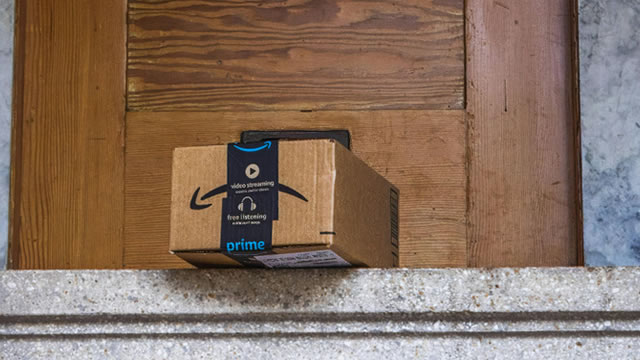The stock market has been on a wild ride since President Trump announced his new tariff plan on April 2. The tariffs, which will affect over 180 countries, sent all major indexes plunging, and virtually all big-name tech stocks followed the same path.
One of the hardest-hit tech stocks was Amazon (AMZN -3.38%), down over 10% since the tariff announcement and over 20% since the start of the year. This sell-off can be pinned to the new 34% tax on Chinese imports. Amazon operates its e-commerce platform, but if you have ever bought from it, you may have noticed that many products come from third-party sellers, not Amazon directly.
Investors fear a domino effect. Sellers face high costs, which they pass on to customers, which could discourage customer spending. And although these are real concerns for Amazon’s business, I’m loading up on the stock as its share price falls. Here are three reasons why.
1. Amazon Web Services won’t face many troubles with the new tariffs
E-commerce made Amazon a household name, but the bulk of its profits now come from its cloud platform, Amazon Web Services (AWS). AWS has been such a financial success that it could be a stand-alone business and still be one of the more successful tech companies.
In 2024, AWS’s operating income was $39.8 billion, which was 58% of Amazon’s total operating income and more than Oracle and Cisco Systems’ last full-year operating income combined.

AMZN Operating Income (Annual) data by YCharts
AWS isn’t 100% exempt from the new tariff plan, but it will avoid the bulk of it because it provides a digital service and doesn’t deal much with physical products.
Where it could see slight cost increases are the imported parts needed to run its data centers, which are important for AWS’s operations. Items such as servers, chips, networking equipment, and storage devices are needed to build new data centers and replace older equipment, so Amazon could see a higher price tag whenever that time comes.
However, these potential cost increases should be a drop in the bucket compared to what AWS makes. I don’t expect it to start a domino effect where AWS customers see their prices increase by a lot and jump ship to another platform (that will have the same issues). AWS is still the world’s largest cloud service provider by a large margin and will be that way for the foreseeable future.
2. Businesses may be more inclined to use Amazon’s logistics services
There’s a good chance we will see many businesses begin to stockpile products in the U.S. before the true costs of the new tariffs kick in. If so, I can see many of them relying on Amazon’s infrastructure and logistics network to store and distribute their inventory efficiently.
Fulfillment by Amazon (FBA) and Supply Chain by Amazon (SBA) are two logistics services businesses could use to navigate this time. FBA could see an increase in businesses wanting to use Amazon’s fulfillment centers for its storage and distribution capabilities, and SBA could see an increase in businesses wanting end-to-end supply chain support that takes a lot of weight off their shoulders.
An underrated part of Amazon’s business has been its willingness to take advantage of its logistics network and expertise to capitalize on the growing e-commerce industry, even if it doesn’t involve businesses selling directly on its platform. This could be another catalyst for that and open up more revenue streams.
3. Buying the dip on Amazon has been a great long-term strategy
This isn’t Amazon’s first rodeo when it comes to major stock price drops. Granted, the others weren’t caused by global tariff hikes and trade disruptions. Even so, it has faced some rough patches. From Dec. 1999 to Sept. 2001, its stock price dropped 94%; from Dec. 2007 to Nov. 2008, it dropped 60%; and in 2022, it dropped by close to 50%.
Even then, Amazon’s stock has been one of the stock market’s greatest success stories. Over the past 20 years, it’s up just under 10,000%, and in just the past decade, it has averaged over 25% annual average returns.

AMZN data by YCharts
By no means would I expect Amazon’s stock to keep growing at these historical paces, but the business has proven time and time again that it’s built to weather virtually any storm that comes its way, and I don’t see this as any different. When the dust settles, and you look back years from now, you’ll likely be glad you bought the stock when you did.
Financial Market Newsflash
No financial news published today. Check back later.










